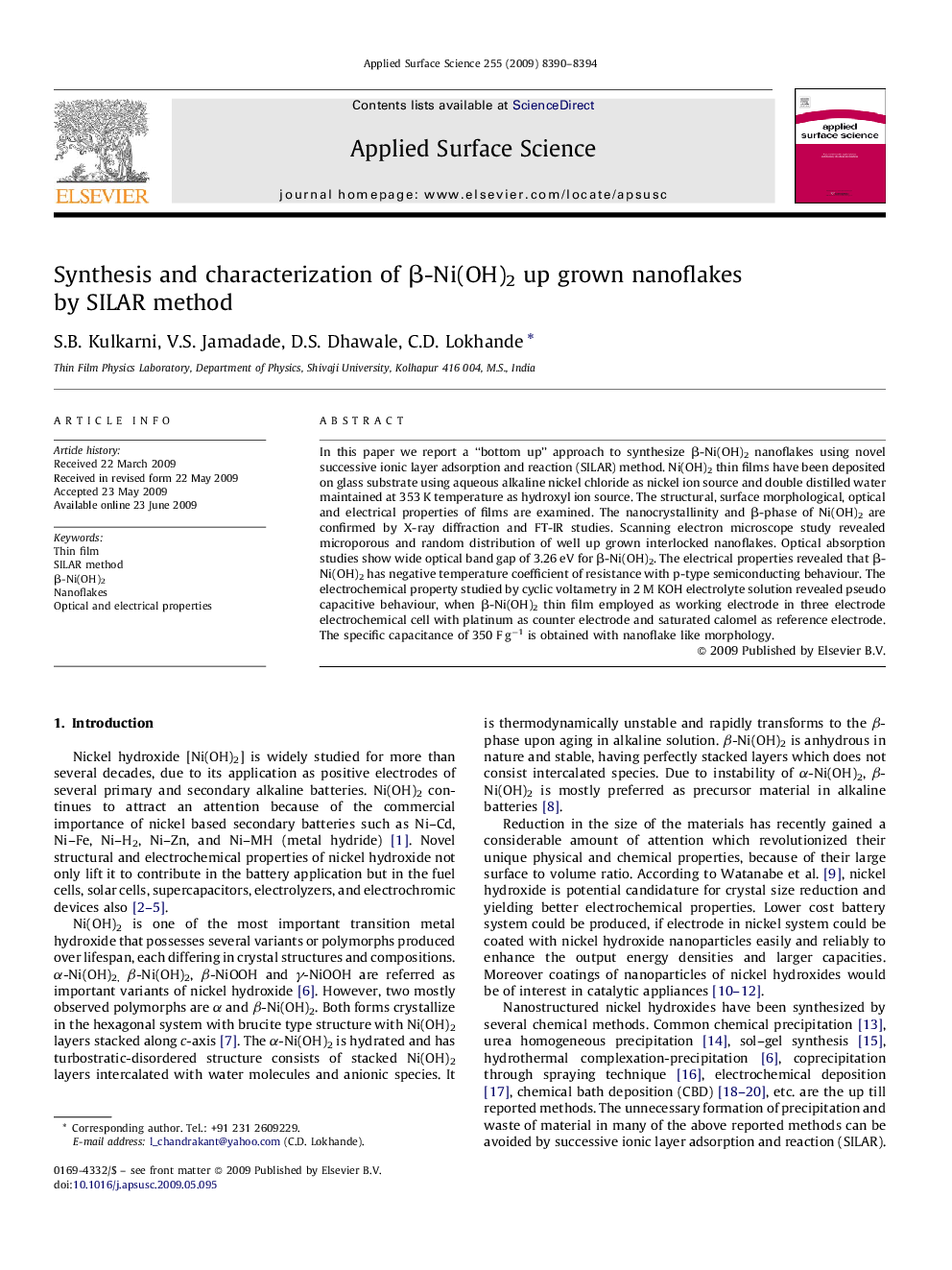| Article ID | Journal | Published Year | Pages | File Type |
|---|---|---|---|---|
| 5362010 | Applied Surface Science | 2009 | 5 Pages |
Abstract
In this paper we report a “bottom up” approach to synthesize β-Ni(OH)2 nanoflakes using novel successive ionic layer adsorption and reaction (SILAR) method. Ni(OH)2 thin films have been deposited on glass substrate using aqueous alkaline nickel chloride as nickel ion source and double distilled water maintained at 353 K temperature as hydroxyl ion source. The structural, surface morphological, optical and electrical properties of films are examined. The nanocrystallinity and β-phase of Ni(OH)2 are confirmed by X-ray diffraction and FT-IR studies. Scanning electron microscope study revealed microporous and random distribution of well up grown interlocked nanoflakes. Optical absorption studies show wide optical band gap of 3.26 eV for β-Ni(OH)2. The electrical properties revealed that β-Ni(OH)2 has negative temperature coefficient of resistance with p-type semiconducting behaviour. The electrochemical property studied by cyclic voltametry in 2 M KOH electrolyte solution revealed pseudo capacitive behaviour, when β-Ni(OH)2 thin film employed as working electrode in three electrode electrochemical cell with platinum as counter electrode and saturated calomel as reference electrode. The specific capacitance of 350 F gâ1 is obtained with nanoflake like morphology.
Related Topics
Physical Sciences and Engineering
Chemistry
Physical and Theoretical Chemistry
Authors
S.B. Kulkarni, V.S. Jamadade, D.S. Dhawale, C.D. Lokhande,
